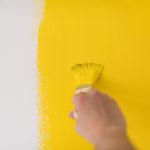Tinning, more commonly referred to as tin plating, is a type of ancient art form. It offers a number of benefits and is suited for a number of different applications. More information about tin plating can be found here.
What Industries Utilize Tin Plating?
The top industry users of tin plating include fasteners, solar, food equipment, hardware, mechatronics and electronics. Some examples of the way that each industry utilizes tin plating includes:
* Avionics for terminals and housings
* Construction of new homes for interconnects and circuit breakers
* Naval vessels and marine hardware for nuts, bolts and screws
* Food manufacturing in bowls and baking sheets
* Solar panels
Benefits Offered by Tin Plating
Tin offers a number of strength’s, which makes it a preferred choice because of the corrosion protection it offers. Other benefits of tin plating include:
* Fretting refers to the surface to surface corrosion.
* Environmental that refers to the sulfur bearing environments that result in tarnishing of tin.
* Excellent solder ability and decent contact resistance.
* Flexibility for using matte tin plating to create a dull finish, or brighter plating when a more metallic look is desired.
* No type of toxicity to life present on earth.
* Most affordable option in regard to silver or gold plating.
Drawbacks Related to Tin Plating
The main weaknesses of tin include its low temperature operating strength, which is under 450 degrees F and the inter metallic phenomena. Both of these factors can cause serious damage to various electronics by creating shorts and bridging when they are assembled. There is no type of agreed upon or understood cause of this, which makes it even more difficult to prevent.
Options for Tin Plating
Tin plating is done in a number of different ways. Some of the ways to improve the deposition of the tin include:
* Pre-plating by using under-plates
* Nickel and copper under-plate metals are ideal for the perfect tin coating
* Using less current density during the pre-plate phase
* Make sure pristine parts are present prior to electroplating since contaminates may cause inadequate plating
* Baking of certain parts to remove extra hydrogen and ensure superior adhesion.
* Use of lower current densities
The process is one that has to be done carefully in order to achieve coatings of tin plating that meet the standards or needs of the application. In most cases, taking the time to find a knowledgeable provider of this service will ensure superior results and high-quality products.





